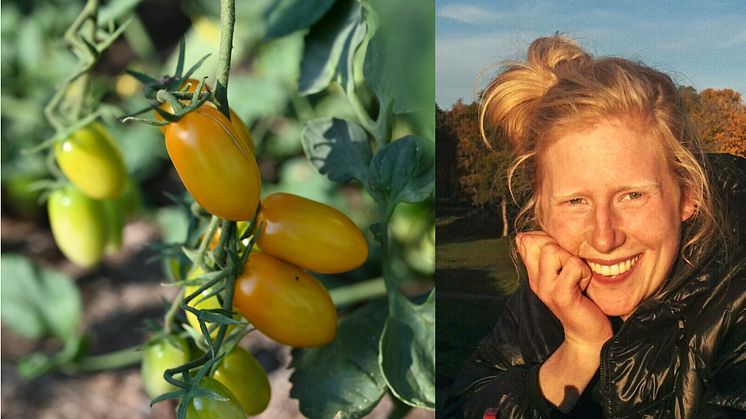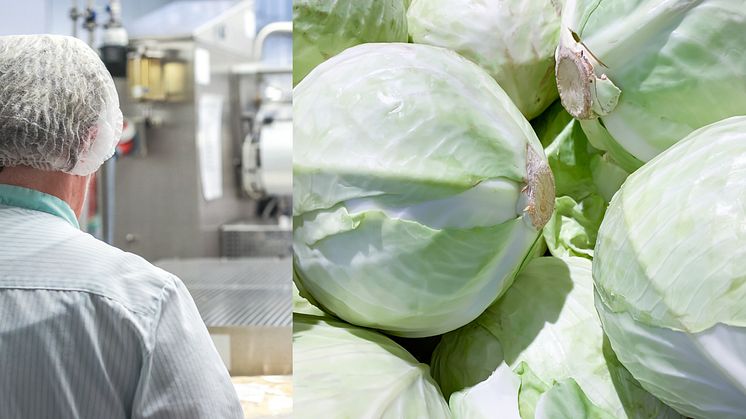
Press release -
Greenfood partners with RISE to Develop Science-Based Biodiversity Targets
Biodiversity is a key issue for the fruit and vegetable industry. However, until now, there has been a lack of methods and frameworks for companies without primary production to calculate their impact on biodiversity. In a new pilot project, Greenfood, together with the research institute RISE, will apply the Science Based Targets for Nature (SBTN) framework and set science-based business targets for nature.
"As biodiversity requirements become more stringent, we're well-positioned to guide our customers toward more sustainable practices," says Annie Svensson at Greenfood.
The now well-known Science Based Targets for Climate (SBTi) has set the standard for ambitious climate action. In 2023, the first version of Science Based Targets for Nature (SBTN) was launched, which, like SBTi, is intended to guide companies and cities around the world in setting concrete and measurable targets related to biodiversity. The goal is to become as influential for biodiversity conservation as SBTi has been for climate.
In recent years, a number of methods have been developed to measure biodiversity at the farm level, for products, and for investment portfolios. There is currently no industry standard for which measurement method should be used for what purpose, and there is a lack of guidance on what are sufficiently ambitious targets in relation to, for example, planetary boundaries. This means that the measurements that can actually be made are both difficult to carry out and inconsistent.
The SBTN framework is a step towards more standardized ways of quantifying the impact on and dependence on nature, and supports actors in identifying the measures that have the greatest impact on biodiversity. For Greenfood and industry colleagues working with raw materials that are traded in many steps and with origins around the world, with production on thousands of farms, in grower collectives, and individual farmers, it is of great importance to find methods for setting, implementing, and following up on goals.
"Since the industry has lacked methods, it has been difficult to develop a strategy that actually makes a difference. At Greenfood, we want to lead the industry towards goals that both reduce negative impacts and increase positive ones, and with SBTn we see such an opportunity," says Annie Svensson, environmental strategist at Greenfood.
It is with this ambition that Greenfood is now entering a pilot project. As part of a master's thesis in industrial ecology at Chalmers, two students, Wilma Vidmark and Louise Persson, have during the spring conducted an analysis of parts of Greenfood's fresh produce business based on steps 1 and 2 of SBTn. This means that they have mapped Greenfood's impact on aspects that are critical for biodiversity and identified so-called hotspots, areas where the company has the greatest impact. The next step is to define relevant goals and how these should be achieved and followed up on. Greenfood is now taking the next step in development, continuing with the next third step together with Swedish research institute RISE. This corresponds to measuring and setting goals, which can then be acted upon and followed up. The project is planned to start in the fall of 2024 and run until the end of the year.
In the food industry, concrete methods for biodiversity are welcome.
"Knowing how to assess and measure the impact on biodiversity has long been a challenge. On the one hand, the change is necessary, but since we are at the forefront of this, the decision to carry out the pilot project with RISE represents a significant competitive advantage for us. The demands for biodiversity will soon be as self-evident as climate requirements, and then we are ready to help our customers achieve their biodiversity goals," says Annie Svensson at Greenfood.
"We look forward to kicking off the pilot and this fall supporting Greenfood further in their SBTn journey. We also hope and believe that the rest of the industry can be inspired by the project's experiences and lessons learned," says Karin Morell, project manager at RISE.
About SBTn:
SBTn is a framework for companies that helps to map, measure and ensure that the business is operated within planetary boundaries. By using SBTn, companies can understand and measure their current impact on nature, identify where the greatest impact is, prioritize actions, and ensure that efforts contribute to biodiversity.
Topics
We just love healthy food. Making it tastier. Simpler. Better. And more accessible. Passion is what has made Greenfood one of northern Europe’s leading groups in healthy food, and we have a history that stretches back some 50 years. Greenfood had sales of SEK 5.3 billion in 2019 and has approximately 1,500 employees. The business is broad and with our three business areas we are involved in the entire food chain – from growing, processing and delivery to the moment when consumers put forks in their mouths. Greenfood’s business areas are: Picadeli, Food Solutions and Fresh Produce.
Brands within the Group include: Picadeli – the leading European take-away chain that focuses on healthy fast food; Greendeli – a Scandinavian leader in healthy and tasty food-to-go products; Daily Greens – a challenger supplying fruit and vegetables direct from the farms, and SallaCarte – the time saver that allows chefs to spend more time on being creative in the kitchen by offering a wide range of freshly prepared fruit and vegetables. Find out more at www.greenfood.se





